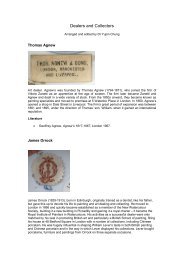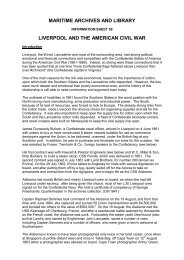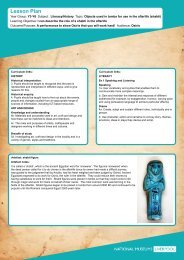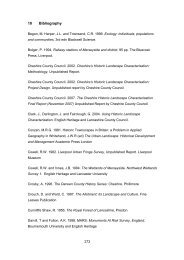Gorer v Lever - National Museums Liverpool
Gorer v Lever - National Museums Liverpool
Gorer v Lever - National Museums Liverpool
Create successful ePaper yourself
Turn your PDF publications into a flip-book with our unique Google optimized e-Paper software.
shipped most of the remaining part of the Bennett Collection off to America,where he was building a steady reputation. This final episode in <strong>Gorer</strong>’s careerwill be discussed below.‘Sheer Cleverness and Courage’The Bennett Collection debacle virtually ended <strong>Lever</strong>’s relationship with <strong>Gorer</strong>.There were the occasional exchanges of letters prompted ostensibly byopportunities to purchase, when, for example, in March 1914, <strong>Gorer</strong> wrote to askwhether <strong>Lever</strong> was interested in reselling the black vase with dragon from theBennett Collection which John D. Rockefeller (18391937) was keen to acquire.With some satisfaction he boasted to <strong>Lever</strong> that ‘I sold the entire collection of myBlack porcelains to Mr Rockefeller’. 66 <strong>Lever</strong> declined to sell. Early the followingyear, <strong>Gorer</strong> again made a tentative enquiry as to whether <strong>Lever</strong> would beinterested in acquiring the Morgan Collection. 67 <strong>Lever</strong> was not.The extraordinary events surrounding the Bennett Collection provide someinteresting pointers to <strong>Gorer</strong>’s character and his relationship with his clients. Asalready discussed, <strong>Gorer</strong> was ambitious and talented. He had, as James HenryDuveen observed, ‘forced himself into a leading position amongst London artdealers by sheer cleverness and courage’, but he was often rash. 68 According toDuveen, <strong>Gorer</strong> had admitted as much: ‘“One of the greatest factors in my66<strong>Gorer</strong> to <strong>Lever</strong>, 14 March, 1914, <strong>Gorer</strong> Papers.67<strong>Gorer</strong> to <strong>Lever</strong>, 12 January, 1915, <strong>Gorer</strong> Papers. The American financier, John PierpontMorgan died in 1913 and his son, John, wanted to sell his father’s Chinese porcelain collection topay New York State inheritance tax. Henry Duveen, not <strong>Gorer</strong>, eventually acquired the collectionand sold it piecemeal to J.D. Rockefeller, Henry Clay Frick and P.A.B. Widener. See GeraldReitlinger, The Economics of Taste, Vol.2, London, 1963, p.p.21314.68Duveen, Secrets, p.260.23



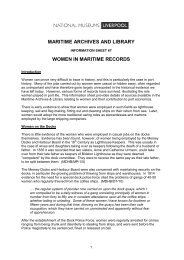
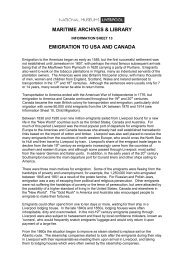
![Ancient Egypt trail [227kb .pdf] - National Museums Liverpool](https://img.yumpu.com/48998817/1/184x260/ancient-egypt-trail-227kb-pdf-national-museums-liverpool.jpg?quality=85)

